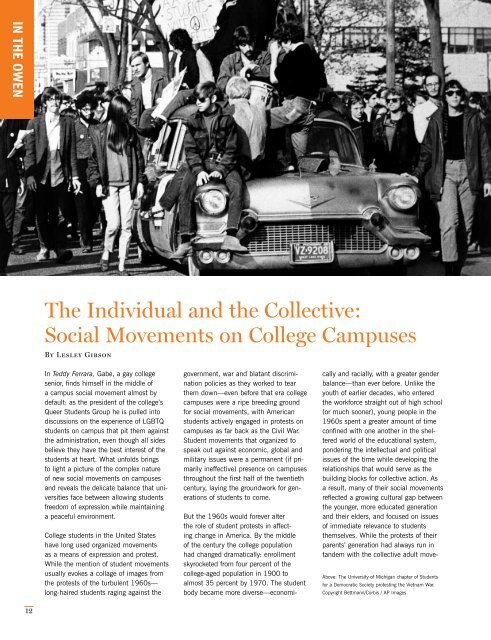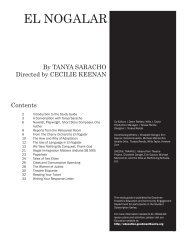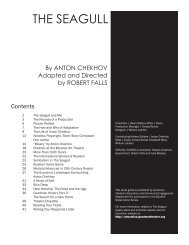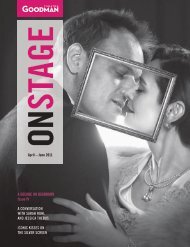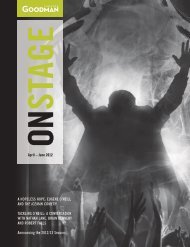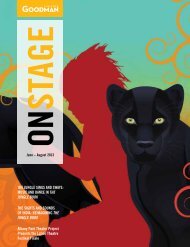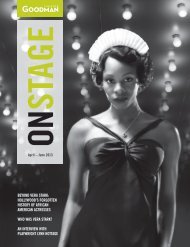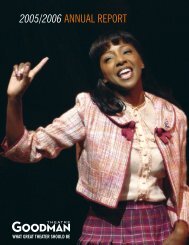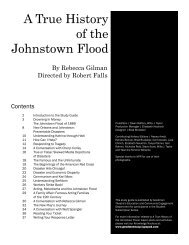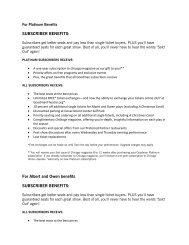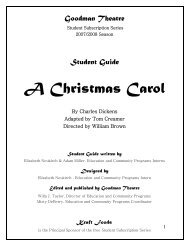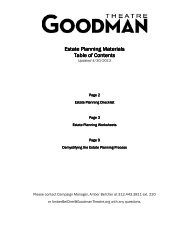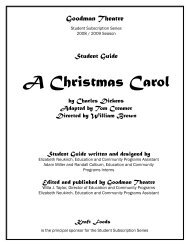You also want an ePaper? Increase the reach of your titles
YUMPU automatically turns print PDFs into web optimized ePapers that Google loves.
IN THE OWEN<br />
The Individual and the Collective:<br />
Social Movements on College Campuses<br />
By Lesley Gibson<br />
In Teddy Ferrara, Gabe, a gay college<br />
senior, finds himself in the middle of<br />
a campus social movement almost by<br />
default: as the president of the college’s<br />
Queer Students Group he is pulled into<br />
discussions on the experience of LGBTQ<br />
students on campus that pit them against<br />
the administration, even though all sides<br />
believe they have the best interest of the<br />
students at heart. What unfolds brings<br />
to light a picture of the complex nature<br />
of new social movements on campuses<br />
and reveals the delicate balance that universities<br />
face between allowing students<br />
freedom of expression while maintaining<br />
a peaceful environment.<br />
College students in the United States<br />
have long used organized movements<br />
as a means of expression and protest.<br />
While the mention of student movements<br />
usually evokes a collage of images from<br />
the protests of the turbulent 1960s—<br />
long-haired students raging against the<br />
government, war and blatant discrimination<br />
policies as they worked to tear<br />
them down—even before that era college<br />
campuses were a ripe breeding ground<br />
for social movements, with American<br />
students actively engaged in protests on<br />
campuses as far back as the Civil War.<br />
Student movements that organized to<br />
speak out against economic, global and<br />
military issues were a permanent (if primarily<br />
ineffective) presence on campuses<br />
throughout the first half of the twentieth<br />
century, laying the groundwork for generations<br />
of students to come.<br />
But the 1960s would forever alter<br />
the role of student protests in affecting<br />
change in America. By the middle<br />
of the century the college population<br />
had changed dramatically: enrollment<br />
skyrocketed from four percent of the<br />
college-aged population in 1900 to<br />
almost 35 percent by 1970. The student<br />
body became more diverse—economically<br />
and racially, with a greater gender<br />
balance—than ever before. Unlike the<br />
youth of earlier decades, who entered<br />
the workforce straight out of high school<br />
(or much sooner), young people in the<br />
1960s spent a greater amount of time<br />
confined with one another in the sheltered<br />
world of the educational system,<br />
pondering the intellectual and political<br />
issues of the time while developing the<br />
relationships that would serve as the<br />
building blocks for collective action. As<br />
a result, many of their social movements<br />
reflected a growing cultural gap between<br />
the younger, more educated generation<br />
and their elders, and focused on issues<br />
of immediate relevance to students<br />
themselves. While the protests of their<br />
parents’ generation had always run in<br />
tandem with the collective adult move-<br />
Above: The University of Michigan chapter of Students<br />
for a Democratic Society protesting the Vietnam War.<br />
Copyright Bettmann/Corbis / AP Images<br />
12


